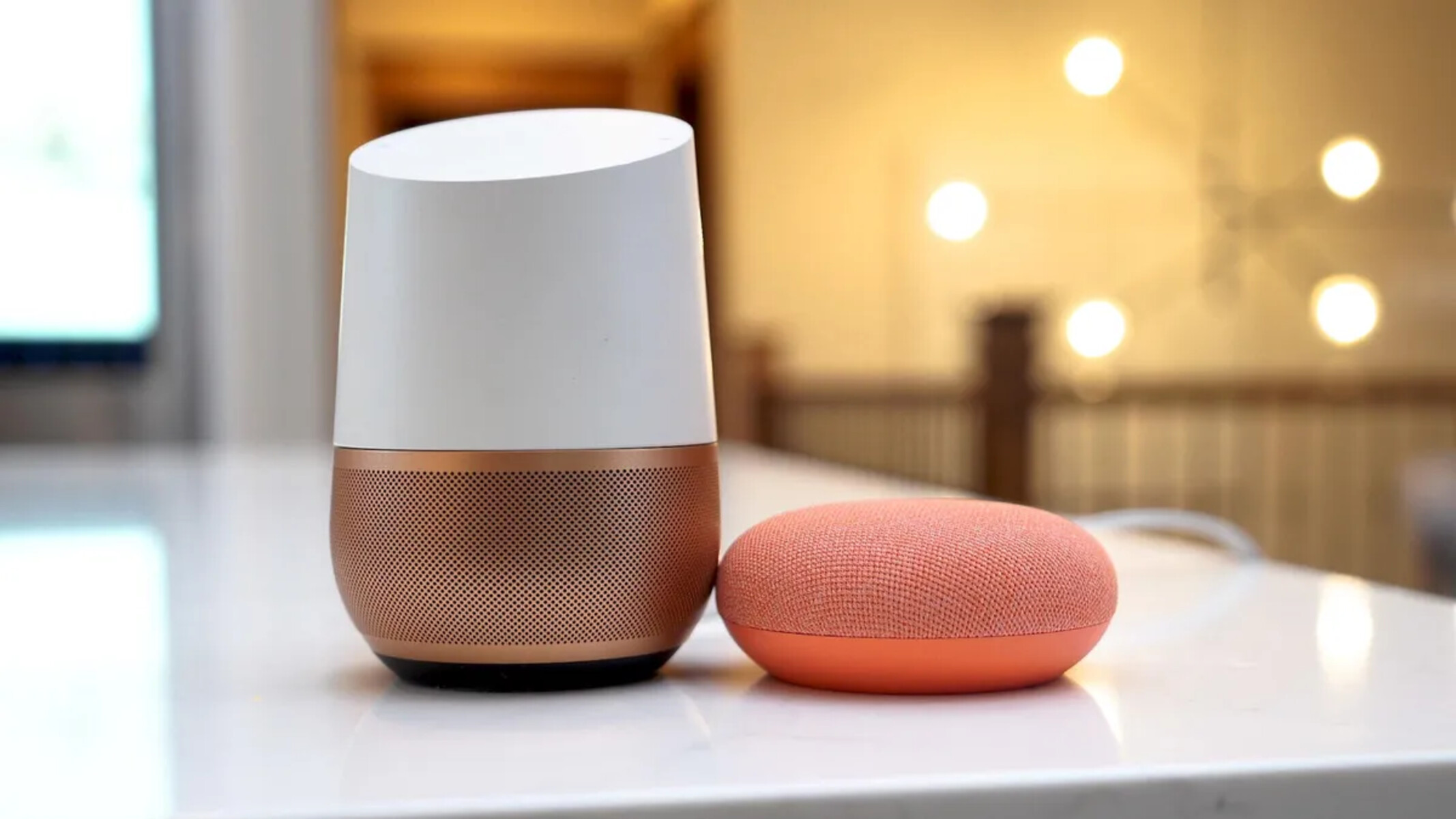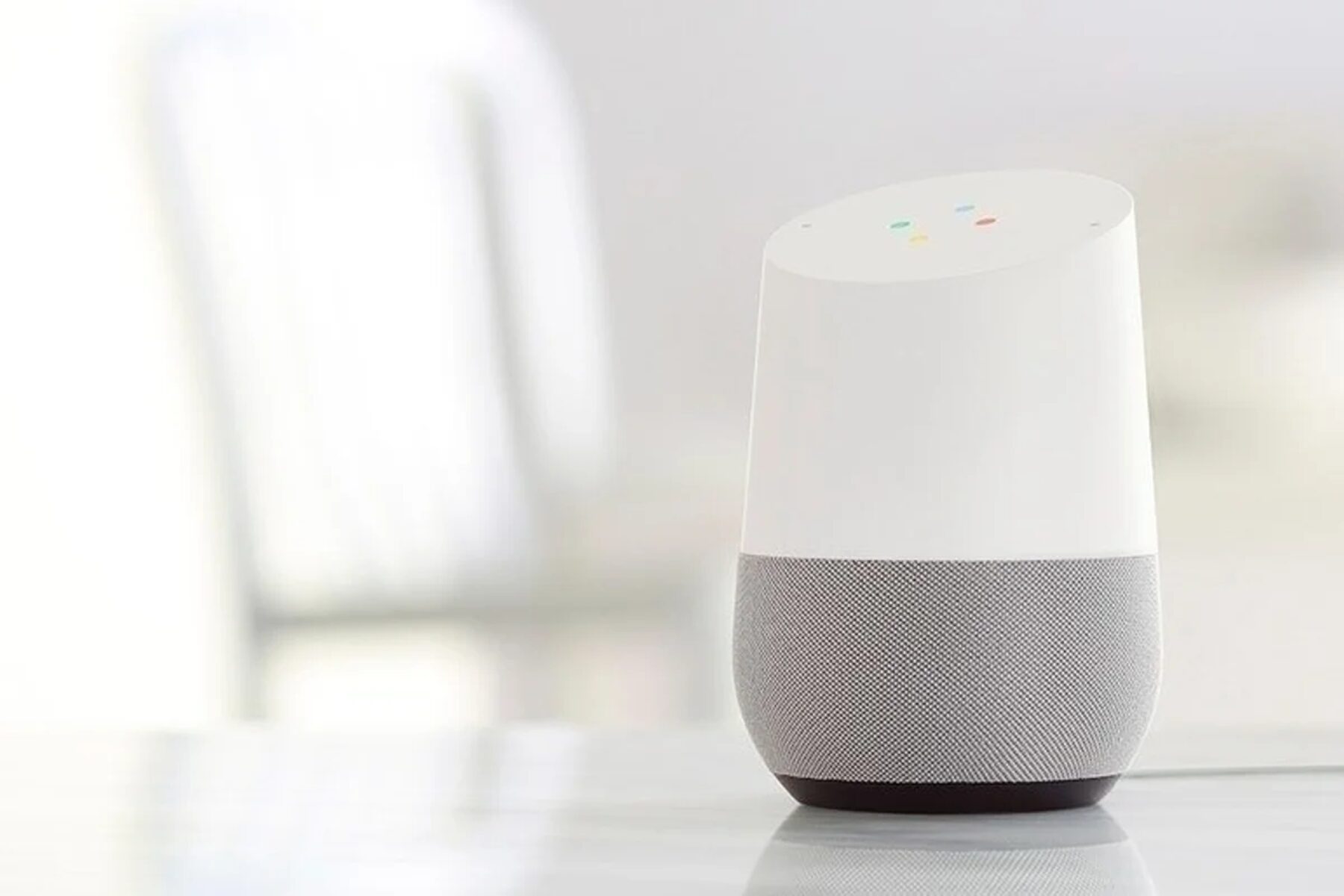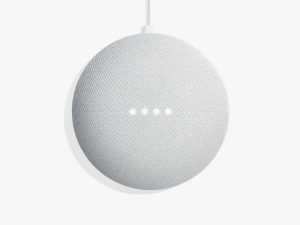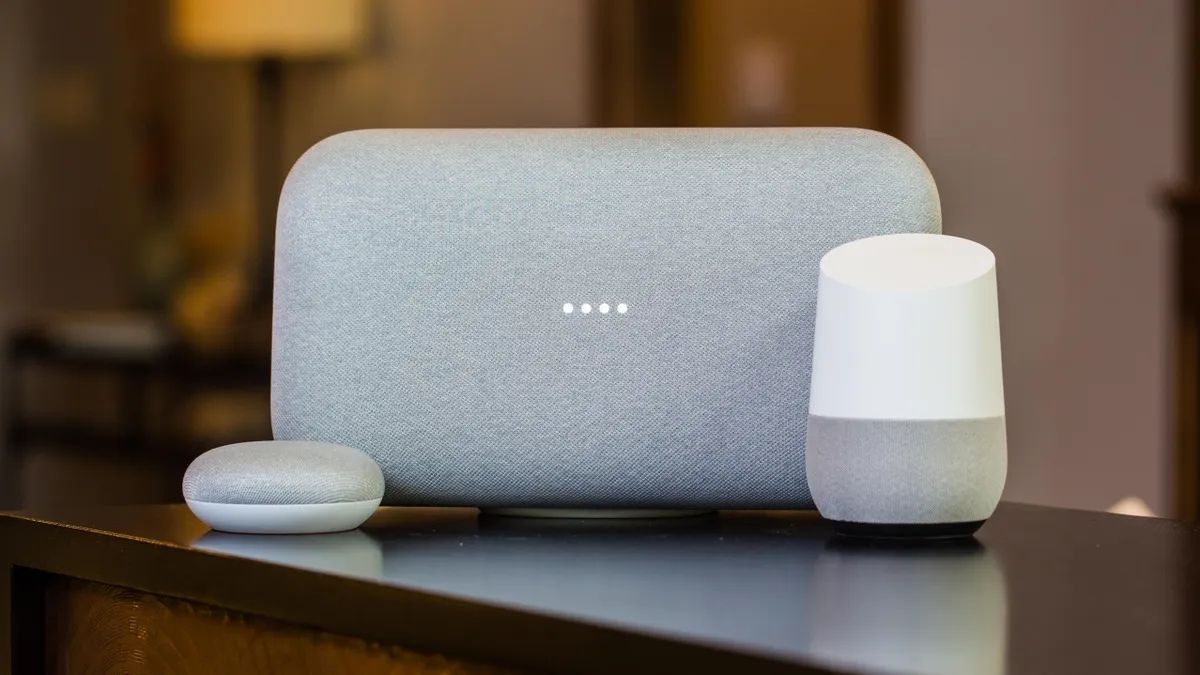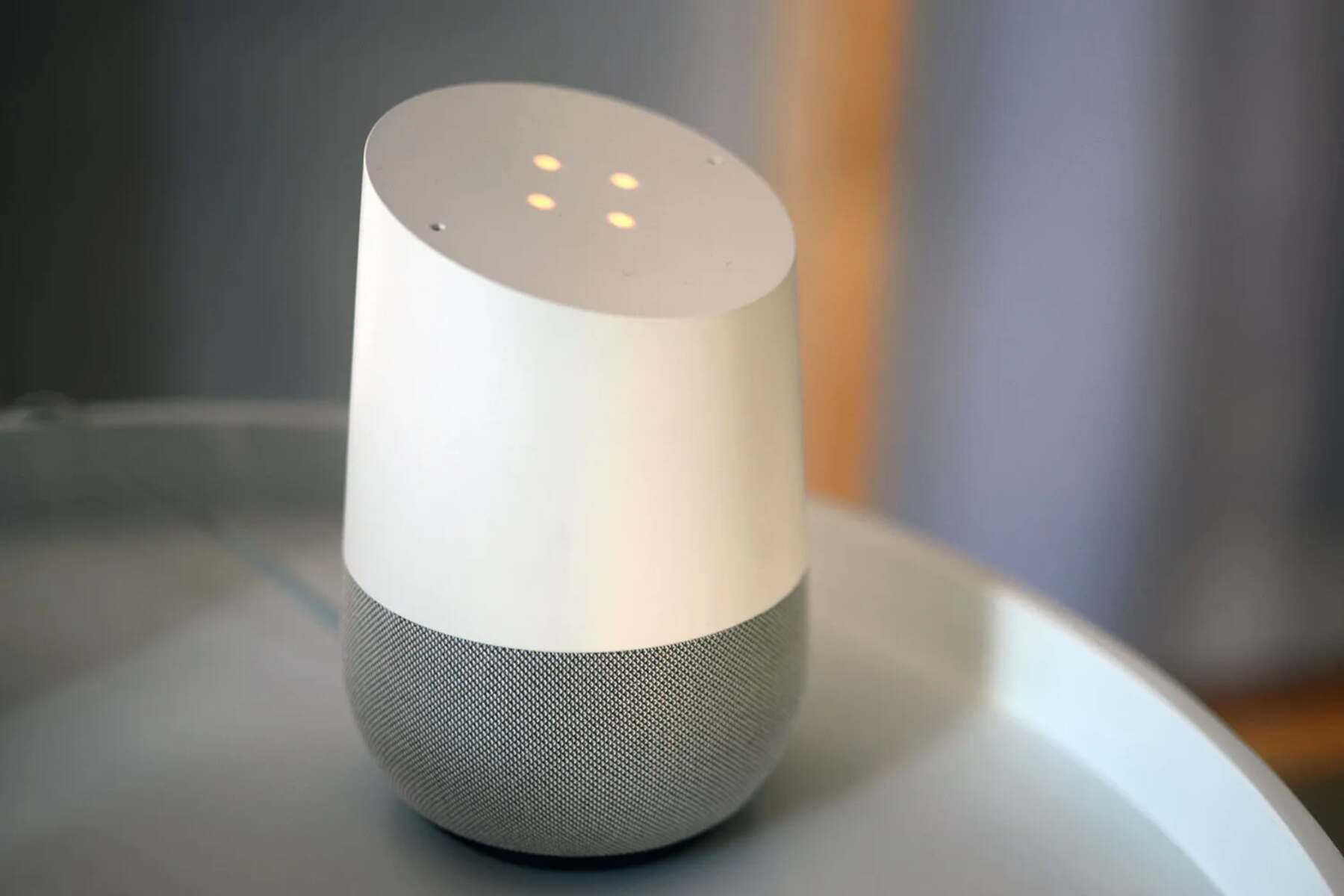Introduction
Smart speakers have become increasingly popular in our homes, allowing us to control various devices and access information with just a simple voice command. However, many users have experienced a common frustration – when using a smart speaker, such as a Google Home or Amazon Echo, their phone also responds, causing an overlap in responses and confusion. This can be especially problematic if you’re in a crowded environment or simply want to ensure privacy.
So, why does Google respond on your phone when using a smart speaker? When you say the activation command, such as ‘Hey Google’ or ‘Ok Google,’ your smart speaker and phone both listen for the command to activate the virtual assistant. This simultaneous listening can lead to both devices responding, making it difficult to control which one answers your queries or performs actions.
The good news is that there are ways to disable Google Assistant on both your phone and smart speaker to prevent this overlapping response. In this article, we will guide you through the steps to disable Google Assistant on your phone and smart speaker, allowing you to regain control and prevent any unwanted interruptions.
Why does Google respond on my phone?
The reason why Google responds on your phone when using a smart speaker lies in the way these devices are designed to function. When you activate the virtual assistant on a smart speaker by saying the activation phrase, both the smart speaker and your phone are programmed to listen and respond. This feature is intended to provide a seamless experience, where you can access information and perform actions across multiple devices.
However, this dual response can often lead to confusion and frustration. When you ask a question or give a command to your smart speaker, it simultaneously triggers the virtual assistant on your phone as well. As a result, both devices may attempt to respond, leading to overlapping responses or conflicting actions.
This simultaneous response can occur due to the close proximity of the smart speaker and the phone, as well as the sensitivity of the microphone on your phone. Even a slight overlap in sound can trigger the virtual assistant on both devices. Additionally, if you have multiple smart speakers or speakers connected to your phone, the response can become even more complex as each device listens for the activation phrase.
This issue can be particularly evident in crowded environments or when your phone is within range of multiple smart speakers. For example, if you’re hosting a party, and both your smart speaker and phone are actively responding to commands, it can create confusion and hinder the smooth functioning of your virtual assistant.
While the simultaneous response of your phone and smart speaker is a feature designed to enhance user experience, it is understandable that there are times when you may prefer to disable this function. The next section will guide you through the process of disabling Google Assistant on your phone, ensuring that only your smart speaker responds to your commands.
How to disable Google Assistant on your phone
Disabling Google Assistant on your phone is relatively straightforward, and there are a couple of different methods you can try. By following these steps, you’ll be able to prevent your phone from responding when you use your smart speaker.
1. Method 1: Disable Google Assistant from settings:
- Open the Settings app on your Android phone.
- Scroll down and tap on “Apps & notifications”.
- Tap on “Assistant” or “Default apps” (the exact option may vary depending on your phone model).
- Select “Assist app”.
- Choose a different default assistant app, such as “None” or a third-party app.
This method essentially sets a different default assistant app on your phone, preventing Google Assistant from being activated when you use your smart speaker. Remember that the exact steps may vary slightly depending on your phone’s manufacturer and operating system version.
2. Method 2: Disable Google Assistant from the Google app:
- Open the Google app on your phone.
- Tap on your profile picture or initials in the top right corner.
- Select “Assistant settings”.
- Tap on “Phone”.
- Toggle off the “Google Assistant” option.
By disabling Google Assistant within the Google app, you can effectively prevent your phone from responding when you use your smart speaker. This method ensures that only your smart speaker will act upon your commands, eliminating any overlap or confusion.
By following either of these methods, you can regain control over the responses and prevent your phone from interfering when using your smart speaker. Now, let’s explore how to disable Google Assistant on your smart speaker, providing a clear and seamless experience.
Method 1: Disable Google Assistant from settings
If you want to disable Google Assistant from your phone’s settings, follow these steps:
- Open the Settings app on your Android phone. You can usually find it in the app drawer or by swiping down and tapping on the gear icon.
- Scroll down the settings menu and locate the “Apps & notifications” option. Tap on it to proceed.
- In the app settings, you may need to tap on “See all __ apps” to view the full list of installed apps on your phone.
- Search for and select “Google” from the list of apps. This will open the Google app settings.
- Inside the Google app settings, look for the option labeled “Assist & voice input” or “Default apps” (the exact wording may vary depending on your phone model and OS version).
- Tap on “Assist & voice input” or “Default apps” to access the default assistant settings.
- Select the option called “Assist app” or “Default assistant”. This will display a list of available assistant apps on your phone.
- Choose a different default assistant app from the list, such as “None” or a third-party assistant app. This will disable Google Assistant from your phone.
By disabling Google Assistant from your phone’s settings, you prevent it from responding when you use your smart speaker. This ensures that only your smart speaker will activate and provide responses to your commands, eliminating any overlap or confusion.
It’s important to note that the exact steps and naming conventions for these settings may differ slightly depending on your phone’s manufacturer and the version of Android you’re using. Make sure to locate the relevant options mentioned above to disable Google Assistant effectively.
Once you’ve disabled Google Assistant from your phone’s settings, you can enjoy a seamless experience with your smart speaker, with full control over which device responds to your commands.
Method 2: Disable Google Assistant from Google app
If you prefer to disable Google Assistant directly from the Google app, you can follow these steps:
- Open the Google app on your phone. You can usually find it on your home screen or in the app drawer.
- Tap on your profile picture or initials located in the top right corner of the app.
- In the dropdown menu that appears, select “Assistant settings”.
- On the Assistant settings screen, tap on the “Assistant” tab at the top.
- Scroll down and look for the “Phone” section. Tap on it to access the phone-specific settings for Google Assistant.
- Finally, locate the toggle switch or option labeled “Google Assistant” and turn it off to disable Google Assistant on your phone.
By following these steps, you can effectively disable Google Assistant from the Google app on your phone. This ensures that only your smart speaker will respond to your commands, eliminating any overlap or confusion between your phone and smart speaker.
Depending on the version of the Google app installed on your phone, the exact location of the settings may vary slightly. However, with a bit of exploration, you should be able to find the relevant options to disable Google Assistant.
Once Google Assistant is disabled from the Google app, you can use your smart speaker without any interruptions or unwanted responses from your phone. You’ll have a clear and streamlined experience, with your smart speaker taking the lead when it comes to fulfilling your voice commands.
How to disable Google Assistant on your smart speaker
If you want to disable Google Assistant on your smart speaker, there are a couple of methods you can try. By following these steps, you can ensure that your smart speaker only responds to your voice commands, without any interference from other devices.
1. Method 1: Mute or turn off your smart speaker microphone:
- Look for the physical microphone button on your smart speaker. It is usually located on the top or side of the device.
- Press the microphone button to mute or turn off the microphone. This will prevent your smart speaker from listening and responding to your voice commands.
By muting or turning off the microphone on your smart speaker, you effectively disable Google Assistant from being triggered. However, keep in mind that while the microphone is off, your smart speaker won’t be able to listen or respond to any commands until you unmute or turn on the microphone.
2. Method 2: Change the activation word or phrase for your smart speaker:
- Open the companion app for your smart speaker on your phone or tablet.
- Look for the settings related to the activation word or phrase. This is the word or phrase that you typically use to wake up the smart speaker.
- Choose a different activation word or phrase that is less likely to be accidentally triggered or less similar to the wake word of your phone’s virtual assistant.
- Save the settings. Your smart speaker will now respond to the newly set activation word or phrase, reducing the chances of accidental triggering.
By changing the activation word or phrase for your smart speaker, you minimize the overlap with your phone’s virtual assistant. This allows you to have more control over which device responds when you give voice commands.
With these methods, you can easily disable Google Assistant on your smart speaker and tailor its behavior to your preferences. Whether you choose to mute the microphone or change the activation word, you can enjoy a smoother and more convenient experience with your smart speaker.
Method 1: Mute or turn off your smart speaker microphone
One of the simplest and most effective ways to disable Google Assistant on your smart speaker is to mute or turn off the device’s microphone. By doing so, you prevent the smart speaker from listening and responding to voice commands, ensuring that it doesn’t interfere with other devices.
To mute or turn off the microphone on your smart speaker, follow these steps:
- Locate the physical microphone button on your smart speaker. The location of the button may vary depending on the specific model and design.
- Press the microphone button to mute or turn off the microphone. This action will deactivate the listening function of the smart speaker.
By muting or turning off the microphone, your smart speaker will no longer respond when you use the activation word or phrase. This helps to eliminate any overlap or confusion with your phone’s virtual assistant.
Keep in mind that while the microphone is muted or turned off, your smart speaker won’t be able to listen or respond to any voice commands. If you decide to use your smart speaker again, simply unmute or turn on the microphone to reactivate the listening function.
This method is particularly useful in situations where you want to ensure privacy or prevent any accidental triggering of your smart speaker. It allows you to have complete control over when your smart speaker responds to voice commands.
By muting or turning off the microphone on your smart speaker, you can enjoy using your smart speaker without any interference from other devices such as your phone. It gives you the freedom to use your smart speaker independently and provides a seamless experience without any overlapping responses.
Method 2: Change the activation word or phrase for your smart speaker
If you want to disable Google Assistant on your smart speaker without muting the microphone, an alternative method is to change the activation word or phrase. By selecting a different wake word that is less likely to be accidentally triggered or less similar to the wake word of your phone’s virtual assistant, you can minimize any overlap and ensure that only your smart speaker responds to your voice commands.
To change the activation word or phrase for your smart speaker, follow these steps:
- Open the companion app for your smart speaker on your phone or tablet. The app is usually provided by the manufacturer and allows you to manage settings and preferences for your smart speaker.
- Look for the settings related to the activation word or phrase. This is the word or phrase that you typically use to wake up the smart speaker. The specific location of these settings may vary depending on the brand and model of your smart speaker.
- Select the option to change the activation word or phrase.
- Choose a new word or phrase that is less likely to be accidentally triggered or confused with your phone’s virtual assistant.
- Save the settings to apply the changes.
By changing the activation word or phrase, you create a distinction between the wake word of your smart speaker and the activation phrase of your phone’s virtual assistant. This reduces the chances of accidental triggering and ensures that only your smart speaker responds to your voice commands.
It’s important to note that some smart speaker models may offer limited options for changing the wake word. In such cases, you may need to choose from a predefined list of alternate wake words provided by the manufacturer.
This method allows you to tailor the behavior of your smart speaker to your preferences and operating environment. By selecting a unique wake word, you can have more control over which device responds when you give voice commands.
By changing the activation word or phrase for your smart speaker, you can enjoy a smoother and more personalized experience, with your smart speaker responding accurately to your commands while avoiding any interference with your phone’s virtual assistant.
Conclusion
In this article, we have explored different methods to disable Google Assistant on both your phone and smart speaker, ensuring a seamless and more controlled voice command experience. By following these steps, you can prevent your phone from responding when using a smart speaker, as well as customize the behavior of your smart speaker.
When it comes to disabling Google Assistant on your phone, you can choose between disabling it from the settings or from the Google app. Both methods allow you to regain control and prevent any unwanted overlapping responses from your phone and smart speaker.
Similarly, you can disable Google Assistant on your smart speaker by muting or turning off the microphone, or by changing the activation word or phrase. These methods ensure that your smart speaker only responds to your voice commands and eliminates any unnecessary interference from other devices.
Ultimately, the choice of which method to use depends on your personal preference and specific circumstances. Whether you prefer to mute the microphone or change the wake word, the goal is to have a clear and streamlined experience with your smart speaker.
By disabling Google Assistant on your phone and smart speaker, you can use your smart speaker confidently without any overlapping responses or confusion. You can enjoy the convenience of controlling devices and accessing information simply by using your voice, without any unwanted interruptions.
Remember, if you ever decide to re-enable Google Assistant on your phone or smart speaker, you can always revisit the settings and adjust them accordingly.
With these methods in mind, you can now make the necessary adjustments to ensure that your smart speaker and phone work harmoniously together, providing you with a more seamless and personalized voice assistant experience.







